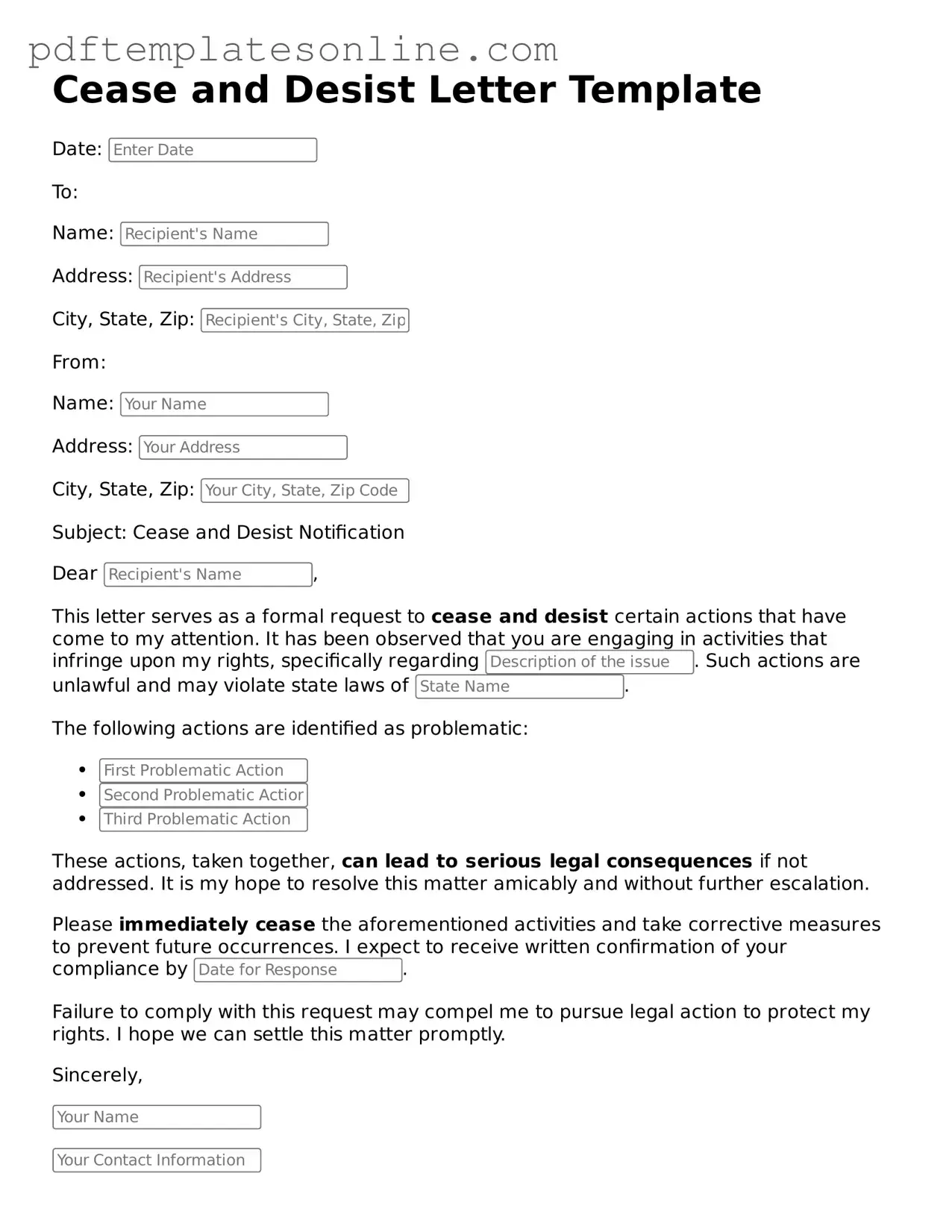Fillable Cease and Desist Letter Document
A Cease and Desist Letter is a formal document used to request an individual or organization to stop engaging in certain activities that are deemed harmful or unlawful. This letter serves as a warning and outlines the specific actions that are objectionable, providing an opportunity for resolution before further legal action is considered. Understanding the components and purpose of this letter can empower individuals and businesses to protect their rights effectively.
Access Cease and Desist Letter Editor Now
